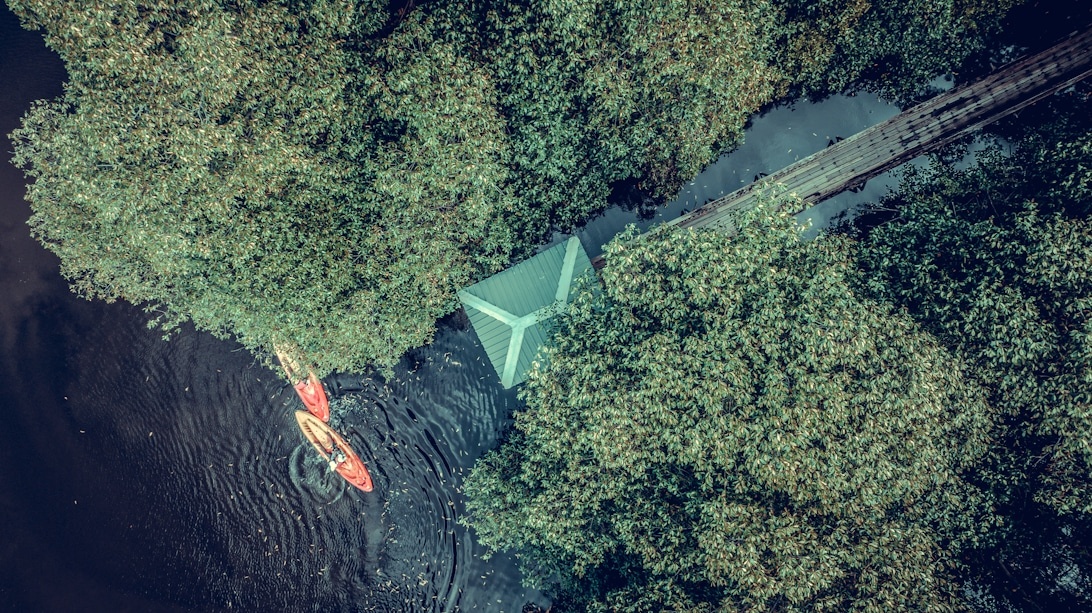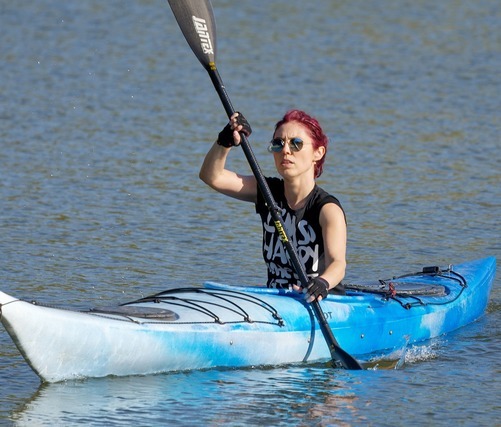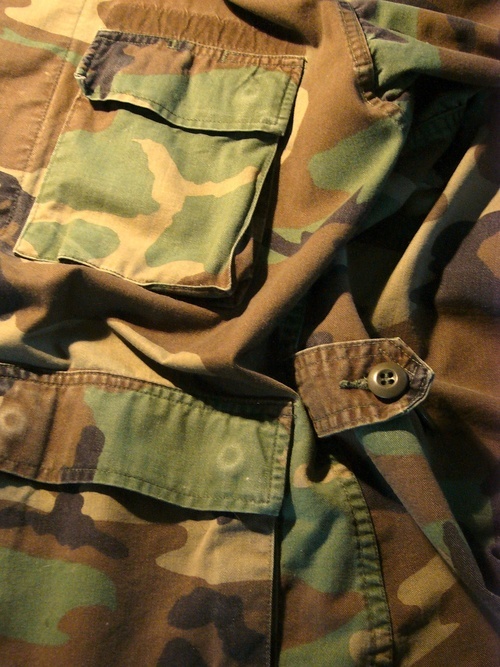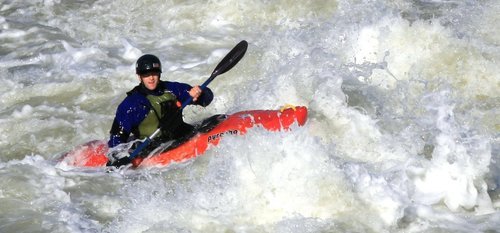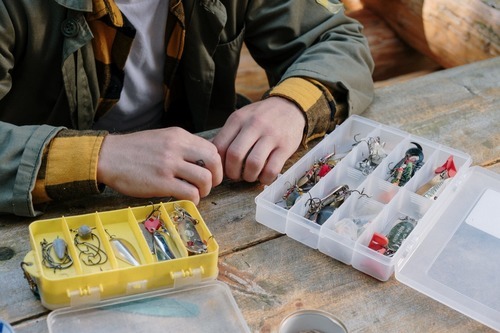Sustainable Kayaking: Environmental Best Practices for Paddlers in 2025
As someone who’s spent countless hours exploring stunning waterways, I’ve seen firsthand the magic that kayaking offers – that unique connection to nature, the quiet glide across the water, the sense of peace and adventure. But with the growing popularity of our sport, our collective responsibility to protect these precious environments grows too. Looking ahead in 2025, embracing sustainable practices isn’t just a nice-to-do; it’s essential. We’re facing increased pressure on waterways, evolving threats like invasive species, and a greater urgency to address climate change. Paddling sustainably is about ensuring the health and beauty of our lakes, rivers, and coastlines for generations to come. It’s about paddling with purpose, ensuring our presence enhances rather than detracts from the natural world we cherish.
Practicing minimal impact on the water
Kayaking is often lauded for its low environmental impact compared to motorised watercraft – and rightly so. We move under our own power, silently exploring coves and shorelines without the roar of an engine or the fumes of exhaust, an inherent eco-friendliness noted by sources like Lowimpact.org. However, this doesn’t mean our presence is entirely without consequence, especially as more people discover paddling by 2025. The cumulative effects of our visits – shoreline erosion at launch spots, disturbance to wildlife, the potential spread of invasive species, and even the impact of manufacturing our gear – become more significant. Our love for these wild places comes with an inherent duty of care. Sustainable kayaking starts with acknowledging this and actively choosing practices that minimise our footprint, guided by the core principles of ‘Leave No Trace’. These aren’t just rigid rules, but a framework for making ethical decisions. Organisations like Paddle Northern Ireland actively promote these guidelines, recognising that access comes with responsibility. Let’s break down how these apply specifically to us paddlers.
Pack it in, pack it out – and maybe a little extra
This seems simple, but it’s vital. ‘Pack it in, pack it out’ means everything – food wrappers, fruit peels (yes, even biodegradable ones take time to decompose and aren’t natural food sources everywhere), used toilet paper, and any other rubbish. Plan ahead to minimise waste by removing excess packaging before your trip. When nature calls during longer trips, use designated facilities whenever possible. If not, dig a ‘cathole’ (a small hole dug for human waste disposal to aid decomposition and sanitation) at least 15cm deep and well away (think 50-100 metres) from water sources, trails, and campsites, as detailed in guidelines from resources like Kayak Training Australia. Crucially, pack out all toilet paper and sanitary items. Want to go a step further? Carry a spare bag to pick up any litter you find along your route. Inspired by initiatives like GreenKayak, which actively encourages paddlers to collect rubbish, you can leave the waterways cleaner than you found them – a practice becoming even more important as waterway usage potentially increases.
Observing wildlife with respect
One of the great joys of kayaking is the potential for close encounters with wildlife. However, ‘close’ should always be on the animal’s terms. Maintain a respectful distance – use binoculars for a better view. Never pursue wildlife, block their path, or separate mothers from their young. Be particularly mindful during sensitive times like breeding or nesting seasons; some areas might even be best avoided altogether during these periods. Keep noise to a minimum; loud voices and banging paddles can cause stress. And crucially, never feed wildlife. It disrupts their natural foraging behaviour, can make them dependent or aggressive, and often leads to health problems. Appreciating wildlife means letting them be wild, a principle emphasized by responsible operators like Sea Kayak Adventures.
Protecting water quality and fragile habitats
Our kayaks glide through living ecosystems. Be mindful of what you introduce into the water. Avoid using soaps and detergents, even biodegradable ones, directly in lakes or rivers; wash yourself and dishes well away from the water’s edge (at least 50 metres is a good rule of thumb), scattering strained dishwater. Be careful not to spill fuel if using camping stoves – in fact, using fuel stoves instead of open fires is often preferred or required in many areas to minimize fire risk and impact. When launching and landing, choose durable surfaces like rock or sand over delicate vegetation or muddy banks to prevent erosion, ideally using established spots as Kayak Training Australia highlights. Paddle carefully in shallow areas, especially over gravel beds which might be fish spawning grounds, or sensitive habitats like seagrass meadows or mangrove forests. Understanding the local environment, as discussed by resources like DACAR Nautical Activities, helps you make better choices.
Preventing the spread with Check, Clean, Dry
Invasive Non-Native Species (INNS) pose a massive threat to biodiversity, outcompeting native species and altering entire ecosystems – a challenge that only grows with increased travel and changing climate conditions. As kayakers moving between different waterways, we can unknowingly become vectors for their spread. Tiny plant fragments, microscopic organisms (like Didymo, a type of invasive algae that remains a persistent issue in places like New Zealand), or fish eggs can hitch a ride on our boats, paddles, PFDs, footwear, and other gear. The ‘Check, Clean, Dry’ protocol, strongly advocated by groups like Paddle Northern Ireland, is our best defence and more critical than ever in 2025. Check your gear thoroughly for any visible mud, plants, or organisms before leaving a waterway. Clean everything meticulously, paying close attention to nooks and crannies, preferably with hot water if possible. Dry everything completely before heading to a new waterway, as many invasive species can survive for extended periods in damp conditions. This simple routine is critical for protecting the health of our rivers and lakes.
Respecting cultural and historical heritage
Our paddling adventures might take us near sites of cultural or historical significance. It’s important to treat these areas with the same respect we afford the natural environment. Avoid touching, damaging, or walking on sensitive structures or artifacts. Stick to marked paths if exploring onshore near such sites. Appreciate them from a distance and leave them undisturbed for others to experience, recognizing their value beyond our recreational pursuits, a point also covered in responsible recreation guidelines like those from Kayak Training Australia.
Making conscious choices beyond the paddle stroke
True sustainability in kayaking extends beyond our behaviour on the water. It involves conscious decisions about the gear we use, how we travel to our paddling spots, and the businesses we support. Every choice has a ripple effect, and by thinking critically about these aspects, especially in light of growing environmental awareness leading into 2025, we can further reduce our overall environmental impact and contribute to a more sustainable future for the sport.
Gearing up responsibly materials and maintenance
The kayaks and gear we use have an environmental footprint stemming from their materials, manufacturing, and lifespan. Increasingly, manufacturers are exploring more sustainable options, a trend we expect to see accelerate by 2025. We’re seeing exciting innovations like the partnership between Melker of Sweden and PaperShell, aiming to use fossil-free, bio-based materials in kayak construction. Inflatable kayaks, often highlighted for their portability and potentially reduced transport emissions as noted by sources like Sea Lion Boards, can also be surprisingly durable when made with robust materials like military-grade PVC, contributing to sustainability through longevity. Beyond buying new, extending the life of your current gear through proper care, cleaning, and repair is a cornerstone of sustainability. Local kayak shops often provide invaluable maintenance services and expert advice, helping you keep your equipment in top shape for longer, reducing waste and consumption – a vital role emphasized by businesses like Naples Outfitters.
Addressing our travel footprint
Let’s be honest, getting to those beautiful paddling spots often involves driving or even flying, contributing significantly to our carbon footprint. Tourism accounts for a notable portion of global emissions (around 8%, according to a study referenced by NRS). While kayaking itself is low-emission, the journey there isn’t. As climate awareness grows, addressing this impact becomes increasingly important for responsible recreation in 2025. We can mitigate this by choosing closer destinations more often, carpooling with fellow paddlers, or using public transport where feasible. For unavoidable long-distance travel, particularly flights, consider carbon offsetting. This involves investing in projects designed to reduce or remove greenhouse gases elsewhere, effectively balancing out your travel emissions. Examples include supporting reforestation efforts (sequestration), funding renewable energy projects like wind farms, or investing in initiatives like clean water access in developing nations that reduce reliance on burning wood (emissions prevention). Reputable organisations like MyClimate.org can help calculate your travel emissions and connect you with certified projects, ensuring your contribution makes a verifiable difference.
Supporting the ecosystem choosing sustainable operators and shops
Our purchasing power can drive positive change. When booking guided tours or renting equipment, seek out operators who demonstrate a strong commitment to sustainable practices – a key consideration for conscious paddlers in 2025. How can you tell? Look for evidence: Do they mention specific eco-certifications or partnerships (like being a Leave No Trace Partner)? Do they have a clear sustainability policy outlined on their website? Do they talk about employing local guides, using fuel-efficient transport, or detailing their waste reduction efforts? Do they contribute to local conservation initiatives? Companies genuinely committed to sustainability, like those exemplified by Sea Kayak Adventures, are usually transparent about their practices. Similarly, supporting local kayak shops that actively promote environmental responsibility, offer repair services, and stock eco-conscious products helps build a more sustainable paddling community. This connection between consumer choice and industry practice is highlighted by sources like Naples Outfitters. Choosing businesses that align with your values reinforces the importance of sustainability across the industry and supports local economies, a broader link noted by DACAR Nautical Activities.
Paddling forward our legacy as waterway stewards
Ultimately, sustainable kayaking in 2025 and beyond is about more than just following a checklist. It’s about cultivating an ethos of stewardship, a deep-seated respect for the natural world that paddling allows us to immerse ourselves in. It’s recognising the privilege we have in accessing these incredible environments – the quiet fjords, the sparkling lakes, the dynamic coastlines – and understanding that this access comes with a responsibility to protect them, especially facing the environmental challenges ahead. Every paddle stroke can be an act of mindfulness, every decision a chance to minimise our impact. By embracing these best practices, sharing our knowledge, and fostering a community of conscious paddlers, we ensure that the magic, beauty, and health of our waterways endure, leaving a positive legacy for all who follow in our wake.
What to Wear When Kayaking – A Woman’s Guide
Besides general kayaking essentials, a kayak, and a paddle, much thought goes into choosing the kind of apparel to wear. If you are just getting started with kayaking, you will be confronted with vast options when deciding what to wear.
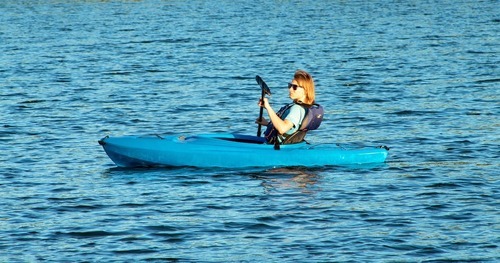
Before setting out for any kayaking expedition, you must invest in layers made of materials that do not soak up water. This property comes in handy when selecting quality women’s workout pants and kayaking gear. Materials that do not absorb water do not wick up moisture when working out and will not only take moisture away from your skin but also weigh you down when you fall into the water.
For your sake, you also need to dress for the temperatures, both the water and the environment. Paying close attention to the temperatures is convenient, especially when you end up in the water and must spend some time getting back into your boat.
The Best Clothes Wear
The best outfits to wear on a kayak should be comfortable, especially when it gets wet. It is common to find some beginners in women’s workout pants or running gear while they need a wetsuit to keep them warm and dry during their entire expedition.
There are different types of wetsuits. Thick wetsuits, for instance, are ideal for cold conditions. The beauty of most wetsuits is that they have ample room to accommodate some swimwear underneath, or you might opt to go commando.
Overall, with experience, you can make informed choices on what to wear. This way, you can choose quality gear that matches your needs.
Kayak Uses
Military Kayaks
While kayaks are predominately utilised for recreation, they also have more serious uses. Over the years, these vehicles have been adopted by the military. Several organisations noticed their potential during World War Two. This included the Royal Marines Boom Patrol Detachment, British Commandos and Combined Operations Pilotage Parties. Kayaks were ideal for covert operations due to their compact size and silent nature. During WWII, the harbour of Bordeaux was raided in an event known as Operation Frankton. The commandos entered the coast via unique military kayaks.
Aside from actual combat, several armies have recognised the importance of kayaks for gaining reconnaissance. An excellent example of this is the Falklands War when these vessels allowed scouts to move silently past enemy patrols. The US Navy SEALs are reported to have utilised them for operations within Somalia in the early 1990s.
Over the years, several kayak models have been created specifically for military use. A unit of the UK Royal Navy called the Special Boat Service has its own two-person folding kayak revered for its mobility. This model is notable because it can be launched from a surfaced submarine. It is even possible for divers to exit a submerged sub while carrying a kayak and bring it up to the surface.
Kayaks are so versatile that paratroopers have been known to use them. The vessel may be dropped into the sea or held by the parachutist as they jump from the aircraft. Several branches of the US armed forces favour this method. However, Australia appears to be the country that has utilised kayaks the most for military operations. It was a key vehicle for them during the 1941 to 1945 Pacific War.
Kayak Safety
Kayaking is enjoyable, but with its exciting nature comes several potential hazards. It is vital that all kayakers know how to stay safe while out on the water. Every year the RNLI is called out to rescue people in these vessels.
Over the decades, there have been numerous tragic stories about kayak accidents. Readers can check out the BBC website to learn about specific cases. Many of them were caused by capsizing. The weather and tides can change dramatically in very little time. Consequently, people have to know the conditions before they launch their craft.
There are some types of kayaking that are more dangerous than others. A good example is white water rafting, which should only be undertaken by those with a high skill level. River difficulty is usually expressed on a scale from 1 to 6. 1 is used for areas that only have a small number of rough patches. Meanwhile, 6 denotes a genuine risk of death or injury. Therefore, it is essential that kayakers know the difficulty level of the body of water they want to travel through.
It might seem obvious but everyone operating a kayak has to wear a life jacket. If the vessel suddenly capsizes, a flotation device will increase the chances of the person’s survival. Those not wearing one will need to manually stay afloat until help arrives. Doing so will waste valuable energy, and the possibility of drowning can become more real.
Each kayaker brings a kit with them. It can contain a plethora of valuable items. Compasses are essential for navigation. There should be an appropriate amount of water available so that dehydration is prevented. The RNLI recommends that kayakers also bring a phone with them. Doing so will allow them to call the emergency services if they get into trouble. It is wise to keep the device in a waterproof pouch so that it does not get damaged.
While there are many ways to increase safety, the most important thing is to be well trained. Novices can take courses on how to properly utilise a kayak. Education allows them to better identify any potential hazards while out on the water. Kayakers should only launch into bodies of water that are appropriate for their skill level.
Kayak Fishing
Kayaks are ideal vessels for people who want to engage in fishing. Modern kayaks have very high traverse stability, which reduces the risks of capsizing. As a result, fishermen can travel further out to deep water, where their catch will be. Due to the small size of these boats, only one or two people tend to fit in them. However, it is possible for groups of kayakers to head into the water together.
While on a boat, fishing entails utilising a number of techniques. Readers can use Wikipedia to learn about these in detail. There is not much difference between fishing from a large boat or a kayak. In essence, they are the same. However, the pieces of equipment may have to be attached to the smaller kayaks in a slightly different fashion.
Since kayak fishing is so popular many of these vessels are manufactured with the necessary accessories. This includes rod holders, bait containers and anchor trolleys. Anglers will tend to seek out well-known game fish such as marlin, halibut, drum, snook, seatrout and tarpon. Others may prefer species that are revered for their taste. Good examples are tuna, cod and mackerel.
In the past, most people believed that boats needed to move at high speeds for trawling to be effective. As a result, kayaks were seen as an ineffective method. However, it is perfectly possible to snag fish even at paddling speed. When this was discovered, the popularity of kayak fishing soared.
Soft baiting is another way to attain a catch. The person will need to utilise soft lures and weighted jigheads. The lures tend to be in the shape of bait. Fishermen in the Southern hemisphere are more likely to engage in soft baiting because it negates having to use messy live bait instead.
If the person wants to fish very far out to sea, then they are unlikely to launch their kayak from the shore. Instead, the vessel can be stored on a larger boat. Once the vehicle reaches a certain point, the person will get on their kayak and seek out game fish. This is the ideal method for those wanting more excitement as the fish can end up dragging the kayak through the water.
In recent years freshwater areas have been seen as excellent locations for this type of fishing. Species such as largemouth bass, salmon, muskellunge and trout reside in these waters.
Kayak Fishing
Kayaks are ideal vessels for people who want to engage in fishing. Modern kayaks have very high traverse stability, which reduces the risks of capsizing. As a result, fishermen can travel further out to deep water, where their catch will be. Due to the small size of these boats, only one or two people tend to fit in them. However, it is possible for groups of kayakers to head into the water together.
While on a boat, fishing entails utilising a number of techniques. Readers can use Wikipedia to learn about these in detail. There is not much difference between fishing from a large boat or a kayak. In essence, they are the same. However, the pieces of equipment may have to be attached to the smaller kayaks in a slightly different fashion.
Since kayak fishing is so popular many of these vessels are manufactured with the necessary accessories. This includes rod holders, bait containers and anchor trolleys. Anglers will tend to seek out well-known game fish such as marlin, halibut, drum, snook, seatrout and tarpon. Others may prefer species that are revered for their taste. Good examples are tuna, cod and mackerel.
In the past, most people believed that boats needed to move at high speeds for trawling to be effective. As a result, kayaks were seen as an ineffective method. However, it is perfectly possible to snag fish even at paddling speed. When this was discovered, the popularity of kayak fishing soared.
Soft baiting is another way to attain a catch. The person will need to utilise soft lures and weighted jigheads. The lures tend to be in the shape of bait. Fishermen in the Southern hemisphere are more likely to engage in soft baiting because it negates having to use messy live bait instead.
If the person wants to fish very far out to sea, then they are unlikely to launch their kayak from the shore. Instead, the vessel can be stored on a larger boat. Once the vehicle reaches a certain point, the person will get on their kayak and seek out game fish. This is the ideal method for those wanting more excitement as the fish can end up dragging the kayak through the water.
In recent years freshwater areas have been seen as excellent locations for this type of fishing. Species such as largemouth bass, salmon, muskellunge and trout reside in these waters.

